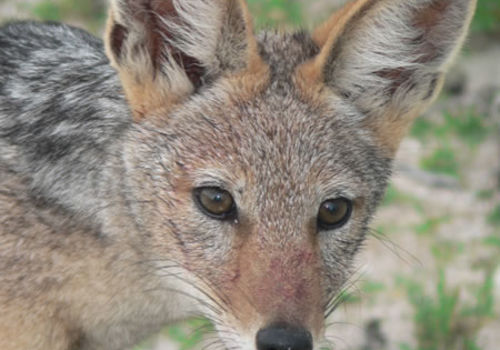
Black jackal
Canis mesomelasBlack jackal
Introduction: The black-backed jackal (Canis mesomelas) gets its name from the broad, dark saddle which exists on the upper parts of the body. Although the black-backed jackal is an efficient hunter, it relies heavily on scavenging for its food supply. Jackals will often be found around campsites searching for scraps and unattended food. It is common for shoes left outside of tents and bungalows in Etosha National Park to go missing during the night and jackals are generally the culprits.
Distribution: Jackals are common throughout Namibia, including the Namib Desert. They are not so common in the extreme north-east of the country.
Diet: Carrion is high on the menu for this master scavenger, but they also survive on insects, birds, rodents and occasionally small antelope. They are also known to kill the young of sheep and goats.
Colouring: Other than the broad, dark saddle on its back, it has other distinguishing features that set it aside from its close relative, the side-striped jackal. They are its black, bushy tail and reddish flanks and limbs.
Breeding: Black-backed jackals are one of the few mammalian species that have long-term bonds. Females litter down in holes, often with two entrances for escape purposes. Litters of 1 to 6 (rarely 9) young are born from July - October, after a gestation period of about 2 months. Both male and female jackals take part in the rearing and feeding of their young.
Size: The black-backed jackal stand at around a shoulder height of 38cm and around 1m long (including the tail). Males typically weigh around 8kg, females 7kg.
Become a citizen scientist & contribute to the long-term survival of Namibia's wild carnivores by logging your sightings on the Carnivore Tracker App
Klein Windhoek

